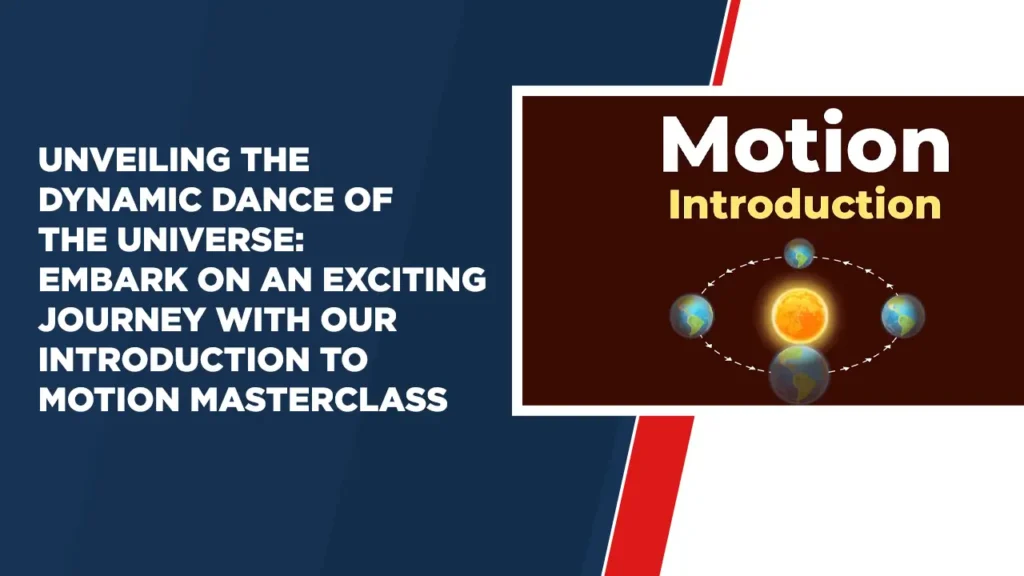Unveiling the Dynamic Dance of the Universe: Embark on an Exciting Journey with Our Introduction to Motion Masterclass!
Introduction to Motion: Understanding the Fundamentals
Motion is a fundamental concept in the field of physics that describes the change in position of an object with respect to time. From the simple act of walking to the complex orbits of planets around the Sun, motion is all around us, shaping the way we see the world. In this article, we will look at the basics of motion, exploring its types, equations, laws and provide real-life examples to enhance your understanding.
What is Motion?
Motion, in the context of physics, refers to the change in position of an object with respect to a reference point. It can be described in terms of distance, displacement, speed and velocity. Distance refers to the total path traveled by an object, while displacement indicates the change in position from the starting point to the ending point. Speed is the rate at which an object travels distance, while velocity includes both speed and direction of motion.
Equations of Motion
To measure and predict the motion of objects, scientists have developed equations of motion. These equations relate to key parameters like distance, time, acceleration, initial velocity and final velocity. There are three primary equations of motion:
- s=ut+at2/2
- v=u+at
- v2=u2+2as
where s represents displacement, u is initial velocity, v is final velocity, a denotes acceleration, and t stands for time.
Laws of Motion
Sir Isaac Newton’s three laws of motion form the foundation of classical mechanics. These laws provide insights into how forces and motion are intricately linked:
- First Law (Law of Inertia): An object remains at rest or continues to move with constant velocity unless acted upon by an external force.
- Second Law (F = ma): The force applied to an object is directly proportional to its mass and acceleration. (F) represents force, (m) is mass, and (a) stands for acceleration.
- Third Law (Action-Reaction): For every action, there is an equal and opposite reaction.
Types of Motion
Motion can be categorized into several types based on characteristics such as direction and trajectory:
- Rectilinear Motion: Motion along a straight line.
- Curvilinear Motion: Motion along a curved path.
- Circular Motion: Motion around a fixed point.
- Rotational Motion: Spinning or rotating motion.
Examples of Motion
Motion is omnipresent, and examples abound in both our everyday lives and the natural world:
- A car accelerating on a highway.
- Earth’s rotation around its axis.
- A ball falling under the influence of gravity.
- A swinging pendulum.
Conclusion
Motion is an integral aspect of our universe, governing everything from the smallest particles to the grandest celestial bodies. Understanding momentum allows us to understand the way the world works, predict outcomes, and design innovative solutions. As we continue to explore the intricacies of motion, we uncover the underlying principles that shape our reality.




